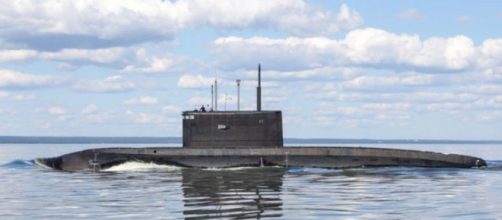This could be the worst nightmare for the entire United States Navy. Russian submarines will finally arm with the latest hypersonic cruise missiles Zircon by next year. The new weapon is expected to increase the russian navy’s striking capability and survivability.
As mentioned earlier in Forbes, the Russian Navy will be the first country to deploy a hypersonic cruise missile. The new hypersonic weapon will be deployed in some of the Latest Russian submarines, giving the Russians a huge advantage in a naval clash. With its blazing speed, the Russian Navy is now more capable of striking time-critical and long-distance targets.
The greater speed also increases the missile’s survival rate against modern air defense systems, making it virtually unstoppable by any modern-day air defense systems. The new hypersonic cruise missiles are expected to be deployed to the country's cruise missile-firing submarines, such as the Severodvinsk-Class submarine.
Russian latest submarine will be armed with the new hypersonic cruise missile
The planned first missile test launch will take place next year. Forbes has learned that the planned test fire will involve a Zircon hypersonic missile. The missile will be fired from K-561 Kazan nuclear-powered cruise missile submarine. One of the latest Russian submarines, the Kazan is also armed with subsonic and supersonic missiles.
For a start, the Zircon is a scramjet-powered anti-ship cruise missile designed for taking out sea targets. The missile can reportedly travel at speed of Mach 8 to Mach 9 (eight or nine times the speed of sound). The range is estimated to be at over 1,000 km or 620 miles. The greater speed would likely create a cloud of plasma that will absorb incoming radio waves, making the hypersonic cruise missile almost invisible to the enemy’s radar screen.
In addition to its terrible speed, the missile is also maneuverable and can be controlled in mid-flight. This makes the missile even more lethal and unstoppable.
For comparison, the US Navy’s main long-range surgical strike weapon, the Tomahawk cruise missile, can only fly at subsonic speed, or around Mach 0.75. The US Navy is currently working on hypersonic technologies and does not have an equivalent weapon in its arsenal, making it more vulnerable to the Russian Navy in a future clash.
The new weapon represents a further development of the Russian missile industry. For much of the Cold War, the Russian missiles have been designed to destroy targets at sea, particularly the US Navy’s carrier strike group. It was not until the Syrian war that the Russian has decided to change course and used the submarine as a missile launch platform for hitting land targets.
The Russian Navy recently made huge headlines after a successful firing of Kalibr cruise missiles in Syria. The subsonic cruise missile Kalibr was launched from a smaller Kilo-class diesel-powered Russian submarine and traveled over 1,500 km through the vast Iranian and Iraqi airspace. It struck targets in Raqqa and Aleppo provinces with precision and devastating results.
The new weapon will have a significant advancement over the subsonic cruise missile Kalibr. The missile will increase the Russian Navy’s kill zone, allowing the Russian to hit farther and faster. The Russian Navy, according to Forbes, is already planning a fleet of eight Kazan-like submarines to carry the new hypersonic weapons.
In addition to the Zircon missile, the Russian military is also working on the nuclear-powered, nuclear-armed cruise missile Burevestnik. The missile, which was first revealed by President Vladimir Putin on March 2018, is reported to have virtually unlimited range, which means that it can hit targets almost anywhere on the globe.
Turkey receives the second batch of Russian S-400 missile
In other missile-related stories, the Turkey defense ministry has confirmed the delivery of the second battery of the Russian-made S-400 missile system. The first delivery of the controversial Russian-made surface-to-air missile defense system was made in July. Unfortunately, the missile delivery has led to a strain in the US-Turkey relationship.
According to Aljazeera, the Russian-made S-400 missile system is not compatible with the NATO (North Atlantic Treaty Organization) defenses and could pose a major threat to some NATO planes, particularly the newly-deployed Lockheed Martin F-35 fighter aircraft.
In July, the US announced that it has removed Turkey from its F-35 programmed after the NATO allies received the first delivery of the S-400 missiles.
The US has also told the Turkey government not to activate the new missile. However, the Turkey Foreign Minister, Mevlut Cavusoglu announced on CNN Turkey that the new missile system will be activated despite repeated warnings from the US military.
Turkey's foreign minister also added that the Turkish government is still open for another American arms deal. Last week, Turkey's President Recep Tayyip Erdogan confirmed to Reuters about plans to buy the Raytheon-developed Patriot missile system. The President said that he is willing to make some discussion with US President Donald Trump about the new arms deal, involving the Raytheon Patriot missile system.


